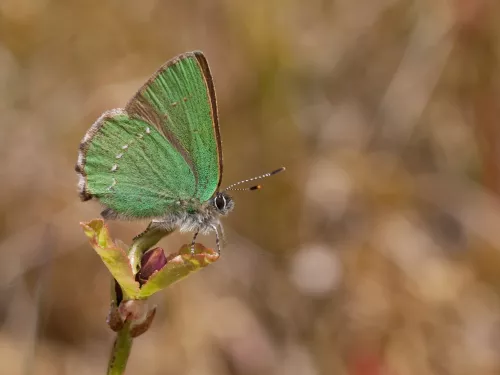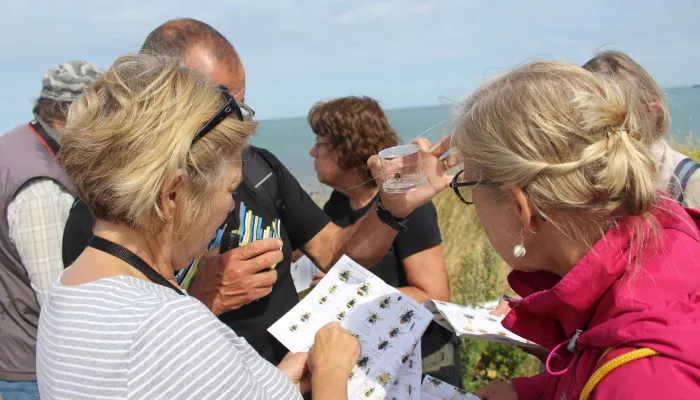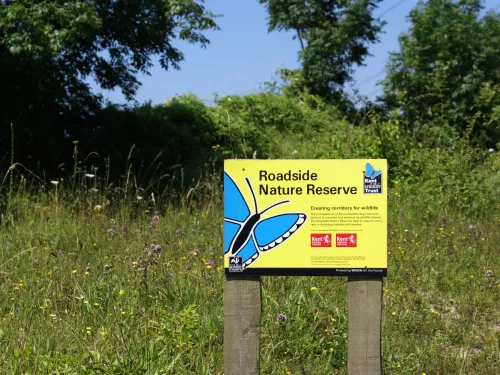
Action For Insects
By working together, we can change the future of insects. Starting right now, you can make small changes in your home, lifestyle and community that will help these fascinating creatures.

The Bee Roads project set out to build on Kent Wildlife Trust’s existing network of Roadside Nature Reserves. These corridors of wilder verges provide better connectivity for our insects and allow wildflowers to thrive. Working in partnership with Kent County Council and Swale Borough Council, this work is part of the ‘Making a Buzz for the Coast’ project led by Bumblebee Conservation Trust. This is generously funded by the National Lottery Heritage Fund, so thanks to those of you who play the lottery and are helping to make this important work possible.
Our Bee Roads mimic some of our bees, with a stripy appearance where we have put in place rotational management. Cutting and collecting encourages a more diverse array of flowering plants to establish. Leaving some sections uncut provides undisturbed habitat for some of the rarer bumblebees, which like long, tussocky grassland for nesting, and also provides refuge for overwintering insects. We have also been busy adding bee banks and scrapes, which provide south-facing, sunny areas of bare ground for solitary bees and wasps to nest.
It has been amazing to see the transformation of some of the sites, which have not seen any management for decades. Just one season of work has turned dense, grass dominated areas into something more visibly flowery, which the insects can enjoy even more. The best part of the project has been working with such a brilliant team of enthusiastic volunteers who make it all possible, from digging bee banks to monitoring bumblebees.
I began volunteering for Bee Roads in February 2019. My first venture involved cutting and raking grass during storm Eric, an exhilarating day in some rough weather. I have attended many days since experiencing the hottest day last year whilst carrying out botanical surveying.Sue Trueman, Bee Roads volunteer
It has been a great experience and has emphasized how much being outside, whatever the weather, has a positive effect on my mental wellbeing. I am now addicted to being outside and find beauty in the tiniest of living things. Thanks to the great group who happily shared their wealth of knowledge I have learnt a lot and forgotten even more."

By working together, we can change the future of insects. Starting right now, you can make small changes in your home, lifestyle and community that will help these fascinating creatures.

The Kent and Medway Road Verge Project, established in 1994, works to identify, protect and manage road verges which contain threatened habitats or wildlife. These are marked by special signs.